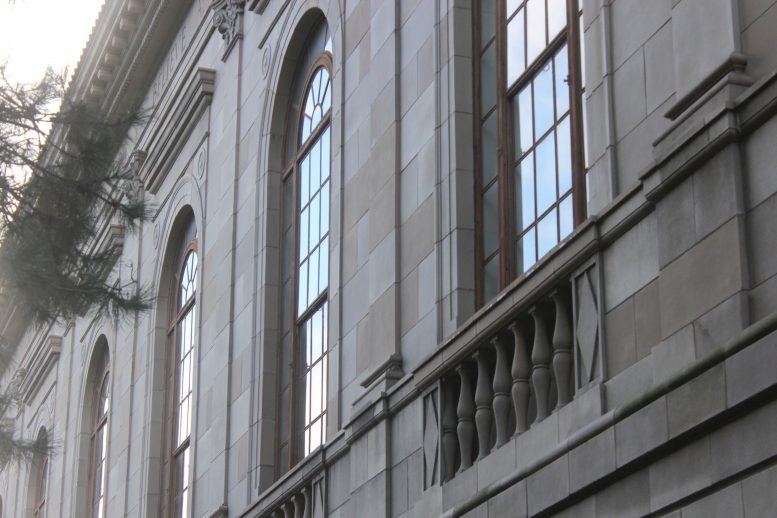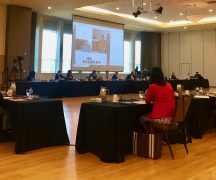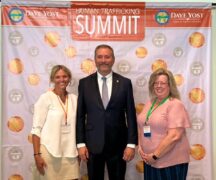By DAVID DUPONT
BG Independent News
Bowling Green State University will cut spending by $29 million by reducing staff by 119, furloughing many others for as much as 20 days, eliminating varsity baseball, flattening its administration and other moves.
In a letter Friday to the BGSU community (see below), President Rodney Rogers, reiterated the university’s financial dilemma brought on the COVID-19 pandemic. BGSU faces a $27 million shortfall in its education and general budget for the Bowling Green campus, and $2 million for the Firelands campus, the result of a cut in state funding and an expected decrease in enrollment. This takes into account federal stimulus payments.
The cuts include $13 million in temporary reductions as well as $16 million in permanent reductions.
The plan calls for the non-renewal of 17 faculty and the layoffs of 30 administrative staff members and 72 classified staff members.
In an interview on Friday afternoon, Rogers said that those personnel reductions in addition to resignations, retirements and other open positions that will not be filled, will account for a savings of $13.5 million. As of March BGSU had just over 2,500 employees.
“Our employment decisions do not reflect the hard work and productivity of those who served in these eliminated positions,” Rogers wrote. “We are very appreciative of their valuable contributions.”
The 17 faculty are all qualified rank faculty with three or fewer years of service at BGSU. Faculty Association President David Jackson said in response to the news: “The BGSU FA expresses its deepest sympathy for all employees who were terminated today.”
Rogers said that while the cuts are considered permanent if fall approaches and the finances and enrollment look better “and there’s a need … we’d absolutely need to bring some these individuals back.”
Also, faculty administrators, and administrative and classified staff will be furloughed for five to 20 days in fiscal year 2021. A furlough is in an unpaid leave. The length of the furlough will be based on a sliding scale determined by salary. Those making over $150,000 will have 20 days of furlough while those making under $50,000 will have five days of furlough.
Rogers himself will have his compensation cut by 15 percent through a combination of 20 furlough days and reduction in pay. Rogers’ salary is $480,000.
Other members of the university’s senior leadership team have also agreed to take a reduction equivalent to 10 percent of their salaries.
The furloughs and reductions will account for $3.1 million in temporary savings. Another $9 million in temporary savings in utilities, travel, equipment and supplies for fiscal year 2021 are also included as is nearly $1 million in temporary savings at Firelands.
Reductions are part of a flattening of the administrative structure. The structure can be done by “empowering faculty and staff,” he said. “When we have clarity around what we’re trying to achieve I think we can flatten it. … I’m committed to working on this on a permanent basis.”
Rogers said cutting a sport is always a difficult decision with many dimensions including alumni who played on the team. For baseball that includes Bob Moosbrugger, the athletic director, who under the administrative realignment will serve as director of intercollegiate athletic, recreation and wellness.
Rogers said the cost of a sport and the amount of “student engagement” are important factors. In the end, “this was a financial decision.”
In order to address the needs of BGSU graduates face entering “one of the toughest periods in the job market,” the university will create an Office of Career Placement and Student Outcomes. The office will focus and support students “to ensure they are placed at high-quality professional organizations and graduate programs.”
The office will provide co-op and internship opportunities, including an expanded Falcon Internship Guarantee.
Cecilia Castellano, vice president for enrollment management, will add “and student outcomes” her title and lead this effort.
“We have pretty much laid out our path forward in addressing these financial challenges,” Rogers said. “We will be very, very focused on insuring that we are in a position to provide a high quality education for students this fall and work hard to make sure our enrollment is robust.”
He reiterated that the plan is for students to return to campus for face-to-face instruction, though likely with a greater online component.
“We were on such a great trend of growth.” He hopes “to turn this around and get back to growth.” Rogers added: “This gives us the opportunity to go into this next year and evaluate our administrative structure. It’s a great opportunity to build out what Bowling Green will look like in post COVID world.”
***
President Rodney Rogers’ letter to BGSU community:
It has been 68 days since Ohio Gov. Mike DeWine declared a State of Emergency. COVID-19 has not only impacted Ohioans, but also billions around the globe. Lives have been lost, countless have contracted this virus, people are unemployed and economies are recessing. This virus is not specific to a country, economic sector or way of life.
In March, everything dramatically changed. We transitioned to online teaching and learning in days. The majority of our staff started working remotely. Students moved out of our residence halls, and we accommodated those who needed to stay. We issued more than $11.5 million in prorated credits and refunds for unused housing, dining and parking plans, and we have begun to disburse more than $6.5 million in federal emergency grants to our students. Our summer semester will be moved online, along with student orientation. We recently launched two University-wide planning groups to aggressively lead our intent to resume in-person learning in the fall. As we faced each challenge, we worked to make decisions in the best interest of our community.
This morning, the Board of Trustees met, and while we recognize that significant changes are needed to adapt and thrive in a post-COVID-19 world, we discussed the path forward for Bowling Green State University to emerge from this crisis in a very strong position.
Beyond our very health, COVID-19 has caused unforeseen financial challenges. This semester ended in a way none of us could have imagined when it started. Gov. DeWine has already announced budget cuts of $3.1 million to BGSU this fiscal year.
In addition, as I have a previously mentioned, we are anticipating a 20 percent decrease in state funding for next fiscal year.Unfortunately, these financial strains on our budget go beyond our support from the State. COVID-19 has caused many uncertainties, including the impact that this pandemic may have on current and future BGSU students. Our projections for enrollment include inevitable declines, leading to a reduction of resources for all areas of the University from our education and general budget to our auxiliary budgets.
Based on current modeling, despite the federal stimulus funding, in totality, we are projecting a nearly $27 million budget gap in the education and general budget on our Bowling Green campus and nearly $2 million at BGSU Firelands for fiscal year 2021. Before this global crisis, we were in a sound financial position because of growing enrollments and increases in our academic quality. This progress allows us to make budget reductions over two years, unlike many of our peer institutions who do not have this luxury. We worked with and appreciate the input from the leadership of Administrative Staff Council, Classified Staff Council, Faculty Senate and BGSU-FA. We have identified, with feedback from students, faculty and staff, temporary reductions of more than $13 million, as well as permanent budget reductions of nearly $16 million in fiscal year 2021. This is the first step in a two-year plan to address our financial situation. In addition, in the second year, we will make the appropriate adjustments based on updated information regarding the financial impact of enrollment and state funding.
As I have previously shared, the Board of Trustees unanimously passed a policy allowing for furloughs for administrative and classified staff members and faculty administrators at a special meeting on April 17. Furloughs are unpaid employee leaves of absence for specified periods of time while retaining health and other benefits. Furloughs assist the University in achieving one-time, temporary budgetary savings, helping bridge the anticipated financial shortfall.
Faculty administrators, administrative and classified staff members earning more than $150,000 will be furloughed 20 days in fiscal year 2021. This is equivalent to a 7.7 percent temporary salary reduction for a 12-month employee. We have finalized a declining sliding scale of furlough days based on tiers for salaries below $150,000. For example, classified staff members earning $49,999 or less will be furloughed four days, and faculty administrators and administrative staff members earning $49,999 or less will be furloughed five days. You will receive a notification letter regarding your specific number of furlough days in early June, including details regarding the usage and recording of furlough days for fiscal year 2021. The furlough breakdown by salary tiers is available on the Office of Human Resources website.
These furloughs and reductions will temporarily save the University approximately $3.1 million in fiscal year 2021. In combination with the designated 20 furlough days, my overall annual salary will be reduced an equivalent of 15 percent next fiscal year. As I did last year, I have asked the Board of Trustees to redirect any performance bonus to the BGSU Foundation, Inc. to support our students. Members of the University’s senior leadership team have also agreed to take a reduction equivalent to 10 percent of their salary.
We implemented travel and soft hiring freezes, and we made operating budget reductions, with a projected $9 million in temporary savings in utilities, travel, equipment and supplies for fiscal year 2021. In addition, BGSU Firelands made temporary reductions of nearly $1 million.
In addition to the temporary savings, we needed permanent budget reductions to preserve the financial viability of the University. We eliminated unfilled positions and chose not to fill positions that became open because of transitions such as retirements or resignations. We have also made permanent operating budget reductions.
However, in responding to COVID-19, we recognized we are unable to avoid reductions in the number of employees at Bowling Green State University. These have been the most difficult decisions to make. It is with deepest regret that today, 17 faculty, 30 administrative staff members and 72 classified staff members will be notified that they are non-renewed or laid off from their positions. Our employment decisions do not reflect the hard work and productivity of those who served in these eliminated positions. We are very appreciative of their valuable contributions.
This crisis has revealed that now more than ever, we must accelerate our focus on the future, and remain committed to advancing our strategic plan. We must prove that we can be efficient while not compromising the educational experience or the quality of a BGSU degree. While we are proud of our comprehensive University, we must also recognize that to truly reflect the flexibility needed to succeed moving forward, we must flatten our organization and think differently about our functions and administrative structures. While these are difficult decisions, it starts at the top of our organization.
To curate a more fully integrated and intentional experience for each student, I have asked Dr. Joe Whitehead to expand his role to be provost and senior vice president for academic and student affairs. As we reposition student affairs to meet the needs of this upcoming generation, Jodi Webb, associate vice president for student affairs, will report directly to Provost Whitehead.
In addition, we will implement the proposal developed this past year to create a holistic and integrated approach to coaching and advising students. Andy Alt will lead the new Office of Student Success and Life Design. He will manage the centralization of career counseling and academic advising to ensure each student is life-ready upon graduation. His leadership will help us redefine student success, as outlined in our strategic plan.
In a post-COVID-19 world, our value will be judged not only on the quality of our degrees, but the opportunities available for each student upon graduation. As our graduates face one of the toughest periods in the job market, we are creating an Office of Career Placement and Student Outcomes. This area will focus and support our students to ensure they are placed at high-quality professional organizations and graduate programs. This office will provide co-op and internship opportunities for our students, including the build-out of the Falcon Internship Guarantee. Cecilia Castellano will assume an expanded role as vice president for enrollment management and student outcomes and lead this critical portfolio.
These organizational changes to non-faculty areas will allow us to be flatter and more efficient, but also give us the ability to be more effective in telling our story. The brand of our University reaches beyond a tagline or our colors – it represents who we are. Reporting to Cecilia Castellano, Amy West will serve as interim assistant vice president for marketing and brand strategy. She will provide leadership as we refocus our efforts in marketing and branding. Alex Solis, deputy chief of staff in the Office of the President, will now also serve as university spokesperson.
We have spent the recent days identifying opportunities to align functional areas to share resources and streamline practices. I have also asked Bob Moosbrugger to assume an expanded role as director of intercollegiate athletics, recreation and wellness. He will now provide oversight for all athletic facility operations and integrate our student recreation and wellness programs to focus on physical wellness of not just our Division I student-athletes, but each student.
These budget challenges also impact our intercollegiate athletics programs. While we remain committed to supporting Division I athletics programs, we must do this in a financially sustainable approach. We have made the difficult decision to eliminate the men’s baseball program due to financial constraints. This decision was not made lightly, and does not reflect the rich history of the program, including five Mid-American Conference championships and four NCAA regional appearances. We will honor all of the athletic scholarships for the student-athletes affected, and we will continue to support them during their time here. These student-athletes are also immediately eligible for transfer to pursue new athletic opportunities, if they choose.
While we have made changes to our non-academic areas, next year, we must find ways to become more effective and efficient within our academic colleges. We look forward to working with the leadership of Faculty Senate and the BGSU-FA as we continue to consider these financial decisions.
Some have suggested that higher education organizations do not embrace change very well. However, I do not believe that is true at BGSU. That is the essence of what we do here – we learn, we creatively dissect problems and we pursue new knowledge. Higher education is uniquely the place where this space can live. We have innovated and adapted in the past, and I believe we have the ability to do this once again at a time when our University is challenged more than ever before. It will require us to “think anew and act anew.” Our University will look different in a post-COVID-19 world, but we need to support one another. It is our actions and our student-centered commitment that makes our University what it is. Education does not just happen inside the classroom; it is a collective effort by each of us.
In September, I stood before you at the State of the University address. My ask of you today is the same as it was back then. I ask each of you to be up for the challenge ahead. We must be willing to roll up our sleeves and work hard, eyes wide open, ready to tackle the bold. We may not get everything right, but if we are willing to continuously focus on improving, we will not only meet this watershed moment, but exemplify a 21st-century public university for the public good. When we are on the other side of this crisis, we will be an even stronger community and University. Our actions throughout this next year will define the future of BGSU. The next chapter is ours to write. We must own the legacy to which we belong.Regards,

Rodney K. Rogers, Ph.D.
President




